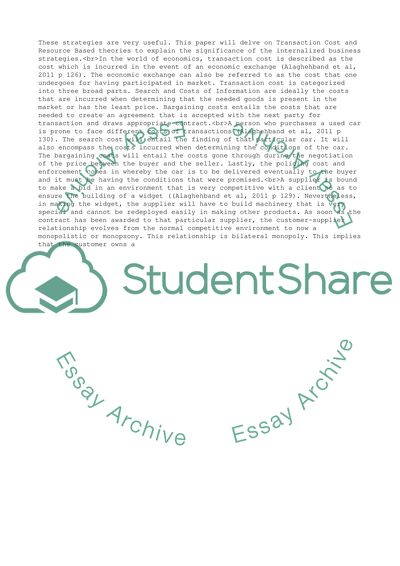Cite this document
(“Critically assess theories of Transaction Cost Economics and Resource Essay - 3”, n.d.)
Critically assess theories of Transaction Cost Economics and Resource Essay - 3. Retrieved from https://studentshare.org/management/1669572-critically-assess-theories-of-transaction-cost-economics-and-resource-based-view-in-terms-of-their-usefulness-in-explaining-firms-internationalising-strategies-illustrate-your-answer-with-reference-to-at-least-two-case-companies
Critically assess theories of Transaction Cost Economics and Resource Essay - 3. Retrieved from https://studentshare.org/management/1669572-critically-assess-theories-of-transaction-cost-economics-and-resource-based-view-in-terms-of-their-usefulness-in-explaining-firms-internationalising-strategies-illustrate-your-answer-with-reference-to-at-least-two-case-companies
(Critically Assess Theories of Transaction Cost Economics and Resource Essay - 3)
Critically Assess Theories of Transaction Cost Economics and Resource Essay - 3. https://studentshare.org/management/1669572-critically-assess-theories-of-transaction-cost-economics-and-resource-based-view-in-terms-of-their-usefulness-in-explaining-firms-internationalising-strategies-illustrate-your-answer-with-reference-to-at-least-two-case-companies.
Critically Assess Theories of Transaction Cost Economics and Resource Essay - 3. https://studentshare.org/management/1669572-critically-assess-theories-of-transaction-cost-economics-and-resource-based-view-in-terms-of-their-usefulness-in-explaining-firms-internationalising-strategies-illustrate-your-answer-with-reference-to-at-least-two-case-companies.
“Critically Assess Theories of Transaction Cost Economics and Resource Essay - 3”, n.d. https://studentshare.org/management/1669572-critically-assess-theories-of-transaction-cost-economics-and-resource-based-view-in-terms-of-their-usefulness-in-explaining-firms-internationalising-strategies-illustrate-your-answer-with-reference-to-at-least-two-case-companies.


